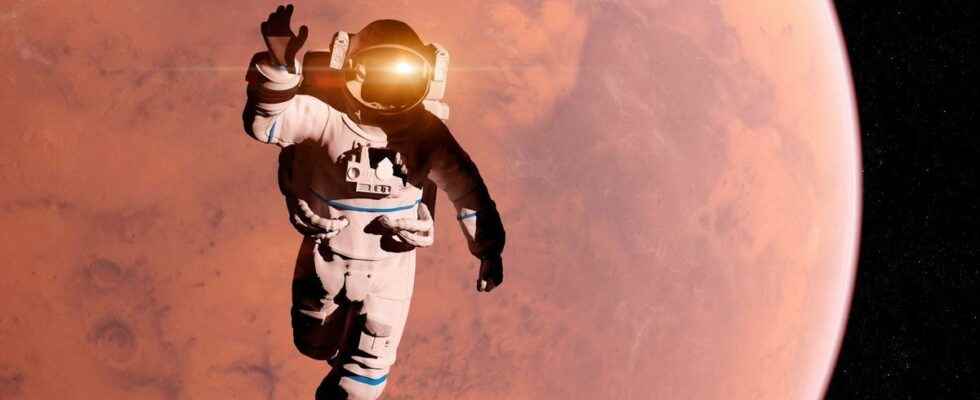Published on
Updated
Reading 2 mins.
Astronauts recover poorly from bone loss suffered during their stay in weightlessness, even a year after their return to Earth, according to a study published on June 30.
The atrophy of bones caused by the absence of gravity, similar to osteoporosis, has long been studied on board space stations. Floating there is pleasant, but the astronauts must limit themselves to several hours of physical exercise a day to limit the damage of this inactivity of the musculoskeletal system. What is less known is how long it takes them to recover after returning to the ground.
Damaged Skeletons
Using new 3D imaging techniques, a study of 17 astronauts from the International Space Station (ISS), published in the journal Scientific Reportsshows that the recovery remains incomplete, even after one year.
Work began in 2015 at the initiative of Steven Boyd, director of the McCaig Institute for Bone Health at the University of Calgary in Canada. Together with his colleagues, they imaged the skeletons of 14 men and three women before their spaceflight, when they returned to Earth, then six months and another 12 months after they landed.
In particular, they carried out bone scans of the tibia (which supports almost all of the body’s weight) and the radius (forearm) to assess their density and their resistance to fracture. While calculating the effects of physical exercises practiced in weightlessness and back on Earth.
Result: one year after the flight, 16 astronauts showed incomplete resorption of the tibia, which had lost up to 2% of its bone density compared to the pre-flight period. The longer the stay in orbit (6 to 7 months) the more the bone system was damaged.
After 12 months, nine of the astronauts had not fully recovered. Damage comparable to a decade of bone loss on Earth, or more.
Consult a GP online
Being in space, “the most drastic physical inactivity”
“We also show that bone architecture is permanently altered”told AFP Dr. Steven Boyd, co-author of the study. “Think of the Eiffel Tower and all its metal rods: in space, we lose some of its rods. When we return to Earth, we can repair the remaining ones, but we don’t create new connections”continues the researcher.
“Microgravity [l’apesanteur]it is the most drastic physical inactivity there is”comments Guillemette Gauquelin-Koch, head of space medicine at CNES. “Even with two hours of sport a day, it’s as if you were bedridden for the remaining 22 hours”adds the doctor, who did not take part in the study.
The inhabitants of the ISS have had for some years a new machine developed by NASA, Ared (Advanced Resistive Exercise Device), which exerts on the body a resistance similar to gravity, allowing leg curls, work of the biceps , abs… “We should do more exercises of this type to reduce bone loss”recommends Steven Boyd.
For future manned flights to Mars – well over six months – it is in any case an obstacle, which is added to the problems of cosmic radiation and the psychological impact of a long confinement. “It will not be easy for the crew to set foot on Martian soil when they arrive… it’s very disabling”according to Dr. Gauquelin-Koch.
